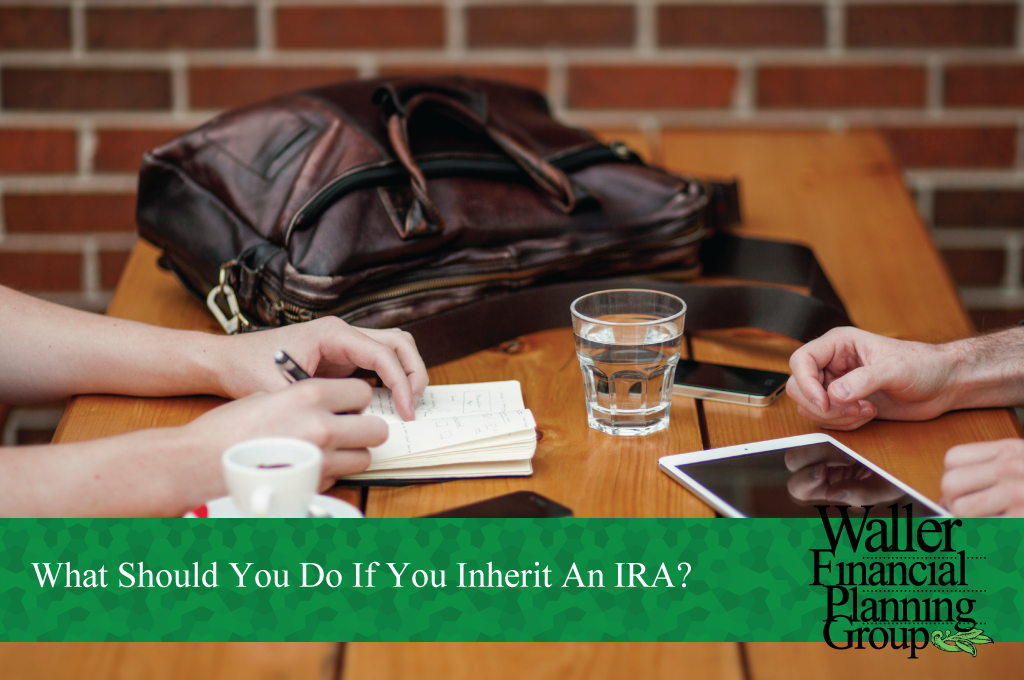
If someone leaves you an Individual Retirement Account (IRA), you may find yourself in unfamiliar territory. You might be familiar with IRAs, but do you know if the same rules govern inherited IRAs? Before you make a rash decision, consider these options on what to do with your inheritance:
Take a Lump Sum… Slow Down
In a theoretical situation, the attorney settling the estate for an IRA owner informs the beneficiary no estate/death taxes are due; therefore, the beneficiary requests all the money from the IRA account believing taxes are not a concern. Such action may inadvertently create an income tax nightmare. Don’t confuse estate/death taxes with personal income taxes. In essence, the taxation of inherited IRA is treated the same as an IRA. Any money distributed from the account will be recognized as income on your personal income tax return.
Before making any decisions regarding a lump sum, consult with your financial planner and tax professional. If you do not need the money, it is best to leave the account alone in order to benefit from tax-deferred growth; however, you need to know the following:
IRA Owner’s Age at Death
Required minimum distributions (RMDs) still need to be met after the death of an IRA owner; however, the requirements that apply depend on whether the IRA owner died before or after the age of 70½.
If an IRA owner dies before turning age 70½, RMDs must be made in one of two ways:
- Life Expectancy Method [i]: The account must be distributed over the life expectancy of the beneficiary. Distributions must begin by December 31 of the calendar year immediately following the first anniversary of the IRA owner’s death.
- Five Year Rule [i]: The entire account must be distributed by the end of the calendar year following the fifth anniversary of the IRA owner’s death.
If an IRA owner dies on or after turning age 70½, you have two options on distributions:
- Life Expectancy Method [i]: The account must be distributed over the life expectancy of the beneficiary. Distributions must begin by December 31 of the calendar year immediately following the first anniversary of the IRA owner’s death.
- Owner’s Life Expectancy [i]: The account must be distributed over the life expectancy of the owner. Again, distributions must begin by December 31 of the calendar year immediately following the first anniversary of the IRA owner’s death.
What if the IRA Owner is my Spouse?
A surviving spouse may elect to treat an inherited IRA in the same manner outlined above. The surviving spouse of an IRA owner, who is the sole beneficiary of an IRA, may also elect to treat the entire account as his or her own IRA. By electing to treat an inherited IRA as your own, you are the new IRA owner. As such RMDs, if any, will be based on your age. This election can be made at any time after the IRA owner’s death.
Are there different rules for a Roth IRA?
The Roth IRA owner’s age at death is irreverent, as they will always be presumed less than 70 ½, as it relates to determining RMDs. Additionally, a surviving spouse of an IRA owner who is the sole beneficiary of a Roth IRA may still elect to treat an inherited Roth IRA as his or her own Roth IRA
Dealing with the loss of a loved one and making important financial decisions can be an overwhelming task. If you inherited an IRA and are in need to discuss your options available to you, feel free to contact one of our CERTIFIED FINANCIAL PLANNERTM professionals to discuss possible solutions for you.
[i] The Internal Revenue Service provides specific instructions on how to determine life expectancy. To further view these instructions and the Five Year Rule, check out Publication 590-B: https://irs.gov/pub/irs-pdf/p590b.pdf





